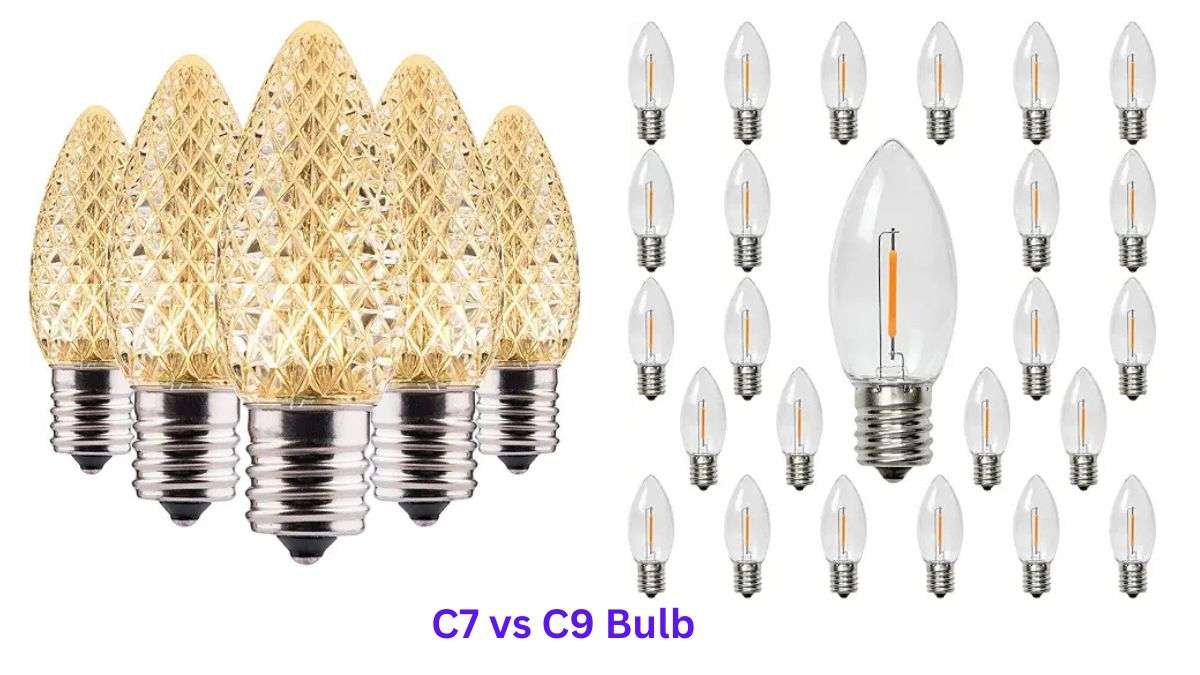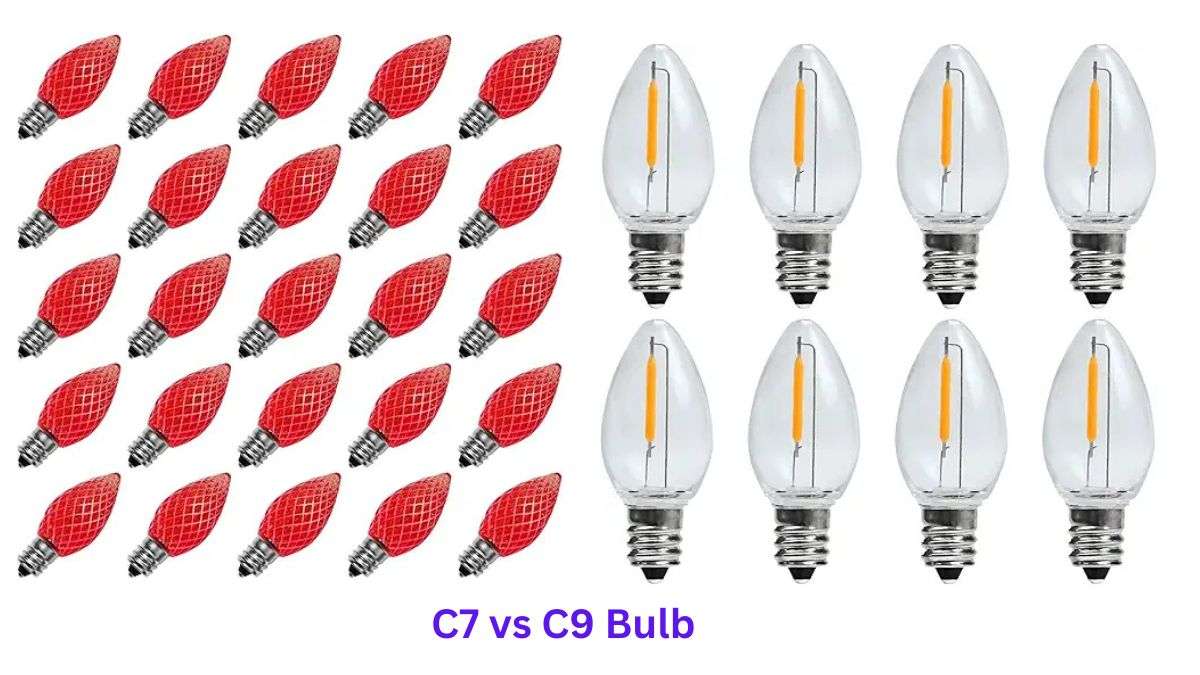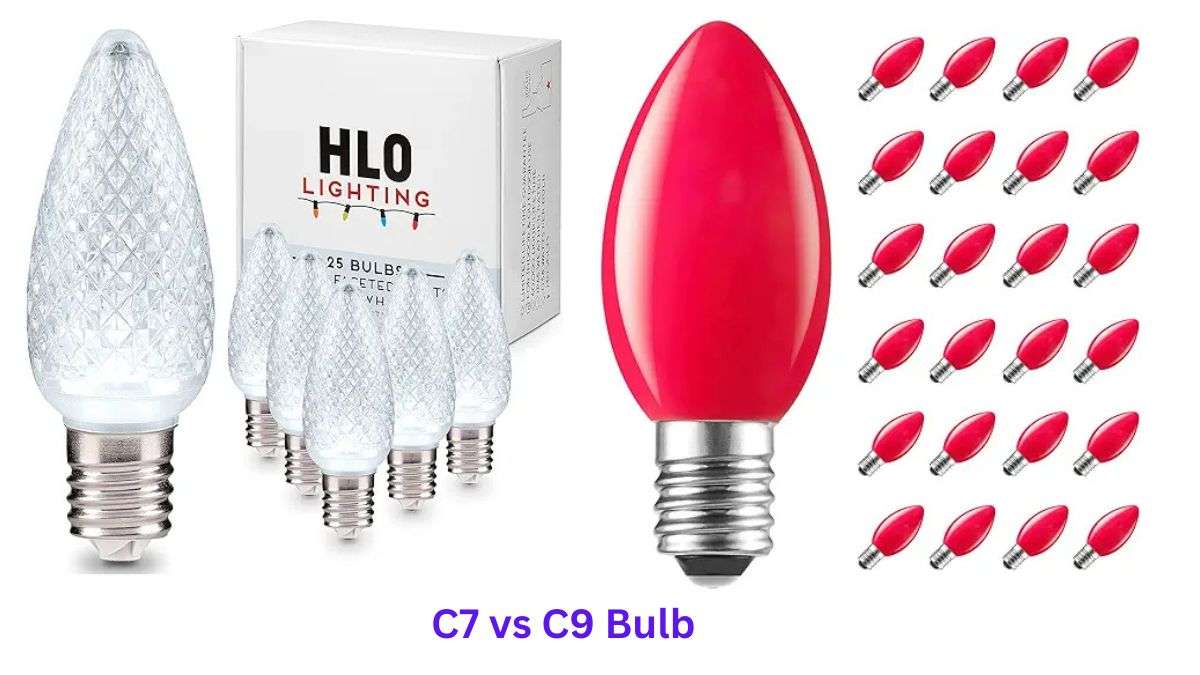Did you know that choosing the wrong bulb size can waste money and even create a fire hazard? As someone who has spent years working with various lighting solutions, I’ve seen that the confusion between C7 and E12 bulbs is all too common! According to the National Fire Protection Association, improper bulb installations contribute to about 3% of household electrical fires. If you’ve ever wondered which bulb to use, let’s dive into the specifics of C7 vs E12 bulbs to ensure you’re making a safe and efficient choice for your lighting needs.
Understanding C7 vs E12 Bulb Basics
1. Definition and Origin of C7 Designation
The “C7” bulb, which stands for “Cone-shaped, 7/8-inch diameter,” is a small bulb that many of us recognize from holiday string lights, night lights, and vintage decorations. They’re famous for their rounded shape, creating a cozy, warm glow.
2. Explanation of E12 Classification System
The E12 designation refers to the bulb’s base, with “E” indicating an Edison-style screw base and “12” referring to the base’s diameter in millimeters. E12 bulbs, often called “candelabra bulbs,” are popular in decorative lighting such as chandeliers and sconces due to their elegant, slim design.
3. Key Physical Differences Between the Two Bulb Types
A C7 bulb typically has a rounder body, whereas the E12 has a narrower, often candle-like appearance. C7 bulbs are generally smaller than E12s, although the difference may appear slight at first glance.
4. Overview of Base Measurements and Specifications
While the C7 base size is about 7/8 inches in diameter, the E12 has a 12-millimeter base. These measurements are essential because they determine which sockets the bulbs will fit into—mixing them up can lead to loose connections or overheating, which is both wasteful and unsafe.
Common Applications and Use Cases
1. Traditional Uses for C7 Bulbs in Holiday Lighting
C7 bulbs are popular in holiday decorations, especially for Christmas lights. Their shape and size work perfectly for outdoor string lights, adding a vintage charm to festive settings.
2. E12 Applications in Decorative Fixtures
E12 bulbs shine in decorative fixtures like chandeliers, wall sconces, and some ceiling fans. Their slender design suits decorative setups, allowing the fixture’s beauty to stand out without overpowering it.
3. Residential vs. Commercial Applications
C7 bulbs are mainly used in residential holiday lighting, while E12 bulbs are common in both residential and commercial settings for ambient and decorative purposes.
4. Compatibility with Different Fixture Types
C7 bulbs fit well with smaller sockets, such as those in night lights and smaller string lights. E12 bulbs, on the other hand, are ideal for candelabra bases found in chandeliers, pendant lights, and wall fixtures.
Technical Specifications and Performance
a). Wattage Ranges for Both Bulb Types
C7 bulbs often range from 4 to 7 watts, while E12 bulbs generally range from 5 to 60 watts, making them better suited for fixtures that need more light.
b). Voltage Requirements and Limitations
Both C7 and E12 bulbs usually operate at standard household voltages (120 volts in the U.S.), but it’s essential to check specific wattage requirements to avoid mismatches that could cause flickering or overheating.
c). Light Output Comparison (Lumens)
C7 bulbs emit softer light, typically around 40–50 lumens, which is ideal for ambient or decorative lighting. E12 bulbs, however, can offer higher lumens depending on the wattage, making them a versatile option for both mood and functional lighting.
d). Energy Efficiency Considerations
Traditional C7 and E12 incandescent bulbs can consume more energy than their LED counterparts. By switching to LED versions, you can save energy, reduce heat emissions, and extend the life of your bulbs.
Cost Considerations and Longevity
- Initial Purchase Price Comparison:
C7 bulbs are generally cheaper than E12 bulbs, especially since many are used in seasonal lighting applications. However, prices vary based on wattage and whether the bulb is LED or incandescent. - Energy Costs Over Time: Due to their lower wattage, C7 bulbs consume less energy, which can be cost-effective for prolonged holiday displays. Higher-wattage E12 bulbs may incur more energy costs, but LED options greatly reduce this expense over time.
- Average Lifespan Expectations:
Incandescent C7 bulbs last around 1,000–2,000 hours, whereas LED versions can last over 25,000 hours. E12 LEDs can offer similar longevity, making them an excellent investment for longer-term use. - Replacement Frequency Analysis:
For both bulb types, LEDs need far less frequent replacements than incandescents. In applications like chandeliers, where replacement can be time-consuming, E12 LEDs can save you hassle and money. - Cost-Benefit Analysis for Different Applications: For holiday or decorative use, investing in LED C7 bulbs can save money over time. If you’re lighting a high-use fixture, such as a chandelier, E12 LEDs offer excellent value by reducing both energy consumption and replacement frequency.
Installation and Safety Guidelines
- Proper Installation Techniques for Each Type:
When installing C7 or E12 bulbs, make sure the bulb is compatible with the fixture’s wattage and voltage requirements. Avoid forcing a bulb into an incompatible socket, as it can damage the bulb and socket. - Common Installation Mistakes to Avoid: One common mistake is using higher-wattage bulbs in fixtures rated for lower wattage, which can lead to overheating. Always check the fixture’s specifications to ensure safe and effective lighting.
- Safety Considerations and Precautions: Since incorrect installation can lead to electrical fires, take extra precautions. If a bulb feels too hot to touch or flickers, it could indicate an issue with the fixture or socket. Never leave decorative lights on unattended.
- Signs of Improper Installation: If the bulb doesn’t fit snugly or flickers frequently, it may not be properly installed. Loose bulbs can lead to poor electrical contact, which poses a safety hazard.

Modern Alternatives and LED Options
- LED Versions of C7 and E12 Bulbs:
LED technology has transformed lighting by offering C7 and E12 options that use far less energy and last significantly longer than incandescents. They’re available in various color temperatures, allowing you to choose between warm or cool tones. - Energy-Saving Benefits of LED Alternatives: LEDs use up to 80% less energy than traditional incandescent bulbs. For frequently used fixtures, this can lead to substantial savings over time.
- Smart Lighting Compatibility:
Many LED bulbs come with smart technology compatibility, allowing you to control brightness and color through your smartphone or home automation system. - Future Trends in Small-Base Bulb Technology: The market for small-base LED bulbs, including C7 and E12, is growing, with innovations in energy efficiency and smart tech compatibility. Expect to see more options tailored to specific lighting needs, including dimmable and color-changing models.
Conclusion: c7 vs e12
Choosing between C7 and E12 bulbs doesn’t have to be complicated! Always check your fixture’s specifications before making a purchase. Whether you’re decking out your holiday display with C7s or upgrading your chandelier with E12s, you’re now equipped with the knowledge to make the right choice. And remember, if you’re ever unsure about an installation, consulting a professional electrician is always a smart move—better safe than sorry!
By understanding the distinctions between C7 and E12 bulbs, you can confidently select the best option for your lighting needs. This guide will help you avoid costly mistakes, improve energy efficiency, and create a safe, beautifully lit space.
Related articles:


